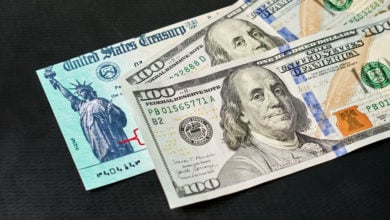Corporate owned newspapers have been all aflutter the last few weeks as the stock market has plunged dramatically by thousands of points. There has been talk of recession and economic downturn when only a few months ago the Wall Street Journal was trumpeting the lowest unemployment rate since 1968. What happened? If all the economic statistics were indicating a healthy economy how did we get to a place where the stock market, the barometer of the health of global capitalism, is in serious turmoil?
The last decade has seen a steady and consistent increase in the price of stocks which has resulted in trillions in profit for the ultra rich. This is unsurprising given that the near economic collapse of 2008 caused stock prices to drop to record lows. While working people lost their homes and jobs by the millions, the banks were able to snap up stocks at incredibly cheap prices.
More than that, the banks were flush with cash given to them by the Federal Government due to their new “Too Big To Fail” status. Taxpayer money went directly from the pockets of workers into the pockets of the banks. The Obama Administration argued that such an influx of cash into the banks would result in them making investments in the greater economy resulting in the creation of jobs and prosperity.
Nothing was further than the truth. This “Trickle Down Economics”, popularized by the Reagan Administration, has been thoroughly debunked in the past. But Obama and the Treasury Department needed a positive spin on their free cash giveaway to the very criminals that caused the crisis in the first place. Instead of creating jobs, the banks created a massive investment bubble by sinking all their newly minted billions into the stock market. Why loan money to a small business which might earn the banks a few hundred thousand in 10 years when they could make millions in a single day speculating on the price of the yen or corn?
The decision was easy. They took billions in taxpayer money and used it to cause the New York Stock Exchange to inflate like a giant balloon. However, as well all know, balloons always pop at some point.
The role of the Federal Reserve
But there’s more to the story. The Federal Reserve played a vital role in allowing the criminal banking industry to make billions off working people. The Federal Reserve is the agency that is the sole entity in the world allowed to determine the supply, and therefore the price, of the US dollar. This agency is highly undemocratic as its governing bodies are staffed entirely by one time executives at private banks, corporate lawyers who represented such banks, lobbyists who promote the interests of the banks in congress and sycophantic economists who say anything the big banks want to hear. This ensures those who govern the Federal Reserve have the interests of the banking industry firmly in mind. When the ruling class have identified a function which they believe is essential to their ability to profit, such as setting the price of the dollar, they will always ensure the function is managed in as undemocratic a way as possible so that the people have no voice or control.
The Federal Reserve sets the interest rates which in turn determine the price of money. For example; when a working person needs to borrow money they must pay the bank back with interest. The higher the interest the more expensive the loan. By controlling this interest rate the Federal Reserve is effectively determining the price of money. A high interest rate makes money expensive, a low interest rate makes money cheap.
When the 2008 crisis hit, the Federal Reserve dropped the interest rate to near zero. This made money incredibly cheap. So, in addition to getting billions in bailout money, the banks were also given the opportunity to take out loans at very low interest rates. The Federal Reserve also implemented a program called “Quantitative Easing”, in which it guaranteed the big banks that it would purchase from them tens of billions of dollars of assets every month.
Wall Street got to borrow nearly for free. And borrow they did. The additional money went straight into the stock market further inflating the balloon.
Today the balloon appears to be bursting or, at least, losing a lot of its helium. Why? Given the massive stock market rally of the past 10 years, why is it slowing down and stopping? There are several key indicators that can help us answer this question.
Weaknesses in the economy
The first is the trade war against China which has dramatically hurt the confidence the ruling class has in the global economy. China is an essential trading partner of the United States and supplies a tremendous amount of essential goods the economy desperately needs to function. Trump has imposed heavy tariffs, or taxes, on Chinese goods causing them to become more expensive. When it costs U.S. companies more money to make the goods that working people need, the companies pass the costs onto workers.
Moreover, since Chinese goods are now, for example, 25 percent more expensive due to tariffs, US companies competing with China have all raised their prices by just below 25 percent ensuring they make greater profits while still undercutting Chinese goods. In the end, everything becomes more expensive for everyone. Stocks fell sharply after Apple announced a significant cut in its revenue forecast, citing the Chinese trade “tensions” as one of the reasons why.
No one knows for sure exactly how the trade war with China will play out but we can be certain it will have dramatic effects on the global economy. Many fortunes will be lost and some will be made but exactly which companies will win or lose remains to be seen. This lack of certainty causes the ruling class to panic and take out large portions of their investments from the stock market which, in turn, tumbles downward.
The second key issue is the policy being pursued by the Federal Reserve. Last year the Fed slowly begin to reverse its long-standing policy by raising interest rates incrementally. The result has been an outflow of capital from the stock market, further aggravating its fall.
On the one hand, this is because interest rates also impact the return on government bonds. The higher the interest rate the more profit one can make investing in government bonds. With the interest rates at near zero the profitability of government bonds has been extremely low and unattractive. So investors have been putting their money in stocks in order to try and make more money. Now that the interest rates are going up, bonds are once again attractive investments. Investors are taking money out of stocks and putting them in bonds. Moreover, bonds, guaranteed by the U.S. Treasury, are seen as safer investments than stocks. Given the instability created by the trade war, investors are looking for safer investments.
In addition, banks can no longer take out those very cheap loans and dump them into stock speculation given that the loans now cost more by virtue of higher interest rates. This also reduces the amount of capital going into the stock market.
December of 2018 saw some of the greatest volatility in the stock market since 2008. In one day, the stock market lost over 600 points. The very next trading day it shot up 1,089 points. We observed the same behavior in October of 2008 where record lows and highs where hit. More than the day-to-day ups and downs, it is the volatility of the stock market that is, in itself, a problem.
Imagine if the value of the dollar changed so dramatically. It would soon become impossible to purchase food or clothing. One’s life savings could be wiped out. This is the sort of volatility that global uncertainty is producing. The ruling class needs stability and predictability in order to assure regular profit making. Once you take that stability away, the markets react.
Ultimately, no one knows for sure what will happen. This is because, under capitalism, the economy is unplanned and subject to the whims of a handful of extremely wealthy capitalists. Society does not determine how our collective wealth is spent and allocated. These decisions are made by several isolated groups of very wealthy people who decide separate of one another.
Moreover, their decisions are not guided by what people need but by how much they can profit. People will go without shoes if the ruling class does not believe the workers can afford the shoes they will produce. Instability and chaos rules such an economy and the future of working people is unpredictable at best.
Contrast this with a planned or socialist economy in which society collectively determines what and how many goods are necessary. Based on this determination, productive capacities, such as factories, produce goods in order to meet the needs of the society which runs them. Ensuring profitability is an unnecessary barrier to meeting human needs and can be completely removed by such a planned economy. Workers will not need to concern themselves with the needs of banks such as interest rates, employment data, and imperialist trade wars. Instead they can focus on bettering their own lives, families and communities with dreams far more profound and meaningful than how to make their bosses even more wealthy.





